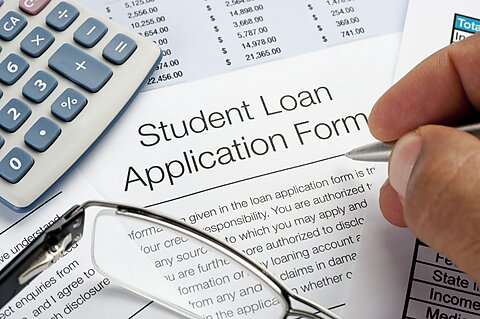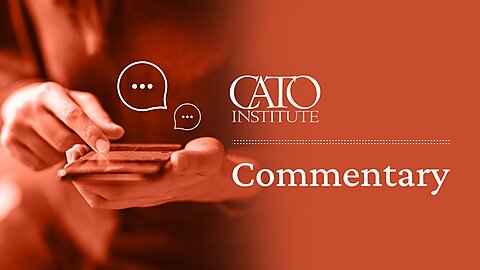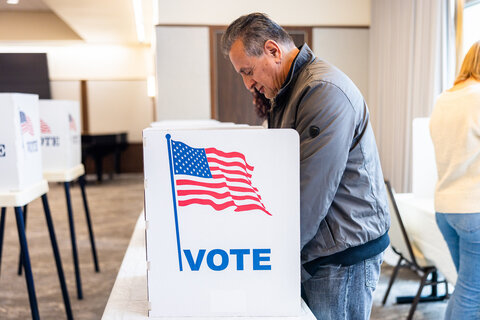Note: This post updates last month’s post. The biggest changes from last month include:
The newest plan relying on regulatory changes under the Higher Education Act has been released and is summarized.
A new court case against the SAVE plan has been noted with links to optimistic and pessimistic commentary on the chances of overturning the plan.
Updated the legal status of the borrower defense and closed school discharge plans to reflect an injunction from the Fifth Circuit.
Mass student loan forgiveness is a terrible policy (see this report for a comprehensive list of reasons), but that hasn’t stopped the Biden administration from trying to forge ahead. While the Supreme Court overturned the administration’s student loan forgiveness plan, every few weeks the executive branch announces another batch of loans that have been forgiven. The administration recently celebrated that since taking office it has succeeded in forgiving $143.6 billion of student loans for around four million borrowers by transferring the financial burden from the students who took out the loans to taxpayers who did not. And they aren’t going to stop—the administration declared that “President Biden has vowed to use every tool available to cancel student debt for as many borrowers as possible, as quickly as possible.”
But if student loan forgiveness lost in the Supreme Court, how are so many student loans still being forgiven? The answer is that there isn’t a student loan forgiveness plan. There are many plans, some of which are already up and running. Previous laws had already left a plethora of methods to forgive student loans, and many of those laws give the Secretary of Education the ability to expand those programs.
The administration is also claiming that existing law gives it the authority to create new ways to forgive student loans. So the student loans the Biden administration already has or wants to forgive are a combination of existing programs, programs the administration has expanded, and new programs the administration is seeking to implement.
Here’s a rundown of the administration’s student loan forgiveness plans and actions, which I’ll update monthly.
HEROES (New plan—overturned in court)
This was the big plan that got a lot of attention in 2022 and 2023. The plan was to forgive $10,000 for borrowers making less than $125,000, and $20,000 for borrowers who received a Pell Grant, at a total cost of $469 billion to $519 billion. The alleged authority for the plan was the 2003 HEROES Act. While designed to alleviate loan‐related hardships for soldiers and reservists serving in Iraq and Afghanistan, the law also covered national emergencies, and the Biden administration argued the COVID-19 emergency gave it the authority to forgive virtually everyone’s loans. Most observers were skeptical of this supposed authority, but it was not clear who had standing to sue (standing is the requirement that those filing the suit have a concrete injury from the policy). The companies that service student loans would be the most obvious injured party, but there was a perception that the Biden administration would punish any servicer that challenged the policy in court, a perception that now appears accurate.
Fortunately, the Supreme Court ruled that Missouri had standing to sue (due to a quasi‐public student loan servicer that would lose revenue under the plan), and that the plan violated the major questions doctrine (which holds that there needs to be clear congressional authorization for programs of substantial economic or political significance), preventing the policy from being implemented.
Higher Education Act (New plan—forthcoming)
Immediately after losing on HEROES, the Biden administration announced a new effort that would use authority under the Higher Education Act. The administration announced the new plan, which would
Waive unpaid interest.
Forgive debt for those who have repaid for 20 years (25 years if there is debt for graduate school).
Forgive debt for those who attended a low‐financial value program (e.g., programs or colleges that fail the Cohort Default Rate or Gainful Employment).
Release additional regulations soon (under a pending plan) that will forgive debt for those undergoing economic hardship.
There are several problems with this plan, which the Penn Wharton Budget Model estimates will cost $84 billion. The public has a few more weeks to comment on the proposed regulations, and the administration will then consider the comments and issue final regulations, with a goal to start forgiving debt this fall. Once finalized, this plan will likely face the same fate in court as the HEROES plan, since it too will likely run afoul of the major questions doctrine. However, much of this forgiveness is easy to implement, so a key question is whether a court injunction will come fast enough to prevent the administration from forgiving billions of debt before the courts can determine whether the regulations are legal.
SAVE (New plan—still active)
Before diving into this one, it is important to understand the concept of income‐driven repayment (IDR). Under traditional (mortgage) style loan repayment, the amount and length of repayment are fixed (e.g., $200 a month for 10 years). For the past few decades, the federal government has been introducing IDR plans, in which the amount repaid each month varies based on the borrower’s current income and the length of repayment varies based on how fast they repay their loan. The key features of an income‐driven repayment plan are:
the share of income owed each month (e.g., 20%);
the income exemption that is protected from any repayment obligation (e.g., the poverty line);
the cap on length of repayment (e.g., 25 years).
IDR is a great idea, providing borrowers with better consumption‐smoothing across their lifetime and flexible repayment, which helps avoid defaults due to short‐term liquidity constraints.
But we’ve also botched the implementation. To begin with, a cap on the length of repayment is completely inappropriate. Income‐driven repayment ensures that payments are always affordable, and borrowers who make so little they do not repay will receive de facto forgiveness even without the cap, so there is no justification for a cap.
The other problem with how we’ve implemented income‐driven repayment is political—the plans are tailor‐made to allow politicians to give constituents big benefits today while sticking future taxpayers with the bill. It is, therefore, no surprise that these plans have grown more generous over time. The first IDR plan, introduced in 1994, had an income exemption equal to the poverty line, a share of income owed of 20 percent, and a cap on length of twenty‐five years. Very few borrowers would receive forgiveness under these terms and, of those who did, they really wouldn’t have been able to repay regardless of whether they received forgiveness. The Obama administration introduced plans with an income exemption of 150 percent of the poverty line, a share of income owed of 10 percent, and a cap on length of payment of twenty years.
The Biden administration’s Saving on a Valuable Education (SAVE) plan took an existing plan (the REPAYE plan) and made it much more generous. It changes the share of income owed from 10 percent to 5 percent, increases the income exemption from 150 percent of the poverty line to 225 percent, and caps the length of repayment at as little as ten years for some borrowers.
By cranking every possible lever to the most generous settings in history, this plan would impose massive costs on taxpayers, estimated at $475 billion for just the next ten years.
Parts of the SAVE plan have already been implemented, and full implementation is scheduled for July 2024. However, there are now two lawsuits that seek to overturn the plan, one by Kansas and ten other states, and another by Missouri and six other states. The legal questions facing this plan are the reverse of the HEROES plan. For the HEROES plan, the main obstacle was standing. Once that hurdle was cleared, it was fairly obvious that the plan was well beyond what Congress had authorized. But for the SAVE lawsuits, this is reversed. Standing is easily established (for Missouri at least), but the plan does have a much stronger argument for being within the parameters of the law. Mark Kantrowitz thinks SAVE will be upheld, while Michael Brickman did yeoman’s work digging up details on page 18,909 of the 1993 Congressional Record that may lead to SAVE being scrapped.
Student Loan Payment Pause (Existing and extended plan—now expired)
When COVID-19 hit in March 2020, student loan payments were paused. The pause was supposed to last two months but ended up lasting three‐and‐a‐half years after Trump extended it once and Biden extended it six times. A pause would not normally result in massive student loan forgiveness as it would delay, but not waive, repayment. There would still be a cost to taxpayers (driven by the government’s cost of borrowing), but it wouldn’t be huge. But recall that IDR plans (unnecessarily) cap the length of repayment, and the pause counted towards that cap.
In other words, for any student who does not fully repay before they hit the length of repayment cap, payments weren’t paused, they were waived. We won’t know for many years how many students had their payments forgiven rather than postponed, but the current estimates range from $210 billion to $240 billion.
There is virtually no chance for this burden on the taxpayer to be reversed. The only good news is that the payment pause ended, with most borrowers restarting payments in October 2023.
Public Service Loan Forgiveness (Existing and extended plan—still active)
The Public Service Loan Forgiveness (PSLF) program was established during the George W. Bush administration and allowed for public and nonprofit workers to receive forgiveness after ten years of repayment when they used an IDR plan. While I object to PSLF in principle (as a distorting and non‐transparent subsidy for the government and nonprofit sectors) and due to the windfalls these borrowers receive (an average of over $70,000 per beneficiary), since PSLF legally exists, it should operate as seamlessly as possible. The Biden administration granted many waivers and other changes to increase the number of borrowers who could benefit under PSLF. Some of these changes were good in the sense that they more faithfully implemented the law, but the administration crossed some lines too. In particular, it started counting some types of deferment as payments (borrowers can get deferment when they cannot afford to make payments, which generally allows the borrower to temporarily postpone payments though interest continues to accrue). The whole point of deferment is to temporarily avoid making payments. So for the Biden administration to give borrowers credit for making payments when they were in deferment is logically, morally, and potentially legally wrong (Cato is part of a lawsuit seeking to end this abuse). The administration also waived income requirements, making more people eligible for the program.
The Biden administration has forgiven “$62.5 billion for 871,000 borrowers since October 2021” under these programs, which works out to just under $72,000 per borrower. By comparison, a formerly homeless student who receives the maximum Pell Grant for four years would get less than $30,000 in Pell Grants. Some of this would have been forgiven even if the administration hadn’t made any changes to the program, but not all of it. In the future, these burdens on the taxpayer can be reduced by rolling back some of the administrative changes, but eliminating the program entirely would require legislation.
Borrower defense to repayment (Existing and extended plan—still active, though recent changes are paused during a court case)
When a college engages in fraud or severely misleads students, borrowers can have their debt forgiven under borrower defense to repayment. This is reasonable, as victims of fraud should have some recourse. It is also extremely rare because a college would not just need to dupe a student but would also need to fool a state, an accreditor, and the US Department of Education, as all three are required to sign off on the legitimacy of a college before its students can take out student loans. As the House Committee on Education & the Workforce noted, “for the first 20 years of the rule, there were 59 claims.”
However, the federal government can claw back debt forgiven from the responsible college. This makes borrower defense to repayment an incredibly powerful tool for progressives in their war on for‐profit colleges. If a for‐profit college can be declared to have substantially misled students, they can be ruined financially by the clawbacks. Indeed, new regulations from the Biden administration would make it much easier to conclude a college engaged in misconduct. As the White House gloated, “Less than $600 million in debt relief had been approved through borrower defense, closed school discharges, and related court settlements from all prior administrations combined, compared to the $22.5 billion approved under the Biden‐Harris Administration alone.” Some of this was done outside the law. For example, $5.8 billion of debt for Corinthian College students was forgiven even if students didn’t submit a borrower defense claim. The administration has promised to forgo clawbacks on much of it (likely in part to avoid giving affected colleges standing to oppose the changes in court).
The good news is that any further forgiveness under the new regulation is on hold due to an injunction from the Fifth Circuit Court of Appeals (this injunction applies to the closed school discharge plan as well).
Closed School Discharge (Existing and extended plan—still active, though recent changes are paused during a court case)
Borrowers whose school closes while they are still enrolled or shortly after they have withdrawn can have their student loans forgiven. The Biden administration imposed new regulations that loosened the requirements and has used this as an excuse to forgive other loans as well. For example, Biden forgave $1.5 billion in debt for students from ITT Technical Institute, even if they didn’t qualify for a discharge. Further forgiveness under the new regulations has been paused by the Fifth Circuit Court of Appeals until courts determine whether the new regulations are legal. However, the administration can still forgive loans under the previous iteration of these regulations. In fact, the administration just announced another $6.1 billion of forgiveness today (May 1).
Total and Permanent Disability Discharge (Existing and extended plan—active)
Borrowers who are unable to work due to a permanent disability can have their loans forgiven. Historically this was very rare. To protect against fraud, the income of borrowers who had their debt forgiven was monitored to ensure that they really couldn’t work. The Biden administration both expanded eligibility and dropped fraud detection efforts, leading forgiveness under total and permanent disability discharge to spike from negligible amounts to $11.7 billion.
Conclusion
In sum, the Biden White House has been the most aggressive presidential administration in history regarding student loan forgiveness. Despite many setbacks, the administration has canceled a massive amount of debt, with most of the burden on taxpayers still to come from future repayments that will no longer be made. And while many of its attempts to forgive student loans have been stymied, there are still many active plans in play, with more on the horizon.




